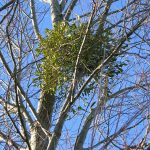How To Protect Your Tender Trees From Frost
We’ve already been experiencing remarkably low temperatures here in the Portland area, and while we probably should have been expecting it, it’s caught many of us off guard. If you have trees or other plantings in your yard that don’t tolerate temperatures below freezing, you may be able to save them with a few preparations.
Why Worry?
Frost harms trees and plants by creating ice crystals within the plant cells. This cuts off the water supply to plant tissues and interrupts the movement of fluids, causing leaves to wither and turn dark brown or black.
Plants are classified by the minimum temperatures they can tolerate. “Hardy” plants can usually tolerate a bit of short-term freezing, while “tender” plants will be injured or killed by freezing temperatures. Fruit trees, palms, fuchsias, and bougainvillea are among the tender variety.
Here’s what you can do to protect your tender trees from frost:
Site Selection
Soil properties, canopy cover, proximity to other plants and structures, elevation, and surface reflectivity can all affect temperatures within your landscape. Avoid planting tender species in low spots or open, exposed areas. A better location would be near a south or west-facing wall, which will absorb heat during the day and radiate it at night. Fences and boulders can serve to protect nearby plantings as well.
Defensive Measures
You can protect your tender trees by wrapping the trunks and branches with an insulating material like palm fronds, cornstalks, cardboard, or fiberglass. When it rains, an outer layer of plastic film will help to keep the insulating materials dry, but plastic alone will do very little to keep a tree warm. Wrap the trunk from the ground up to the main branches. Then, clear any mulch, weeds, and ground cover from the surrounding soil, which will allow heat to radiate from the ground without obstruction.
Also, damp soil will retain heat better than dry soil, so it’s important to keep the ground moist. If the soil has good drainage, run your sprinkler or drip-irrigation system through the night. The water gives off heat, protecting the roots and warming the air near the soil.
If temperatures are expected to drop into the teens you can keep your trees warm by placing a 100-watt outdoor-rated lamp in the trees’ interior. That should emit enough heat to reduce frost damage. Holiday lights (not LEDs) will serve this purpose as well.
Don’t Overreact to Plant Damage
Plants can be incredibly resilient. If you notice signs of frost damage, hold off on pruning or removal– especially when dealing with palms. Wait until the weather warms up in the Spring to see if new leaves sprout. You might have healthy new growth, at which point you can prune off the damaged parts. If you don’t see any regrowth, you can remove the tree and replace it with a more hardy species.
Need help with tree removal? Inexpensive Tree Care’s certified arborists are the area’s most experienced removers and stump grinders. Send us a message or give us a call today.




